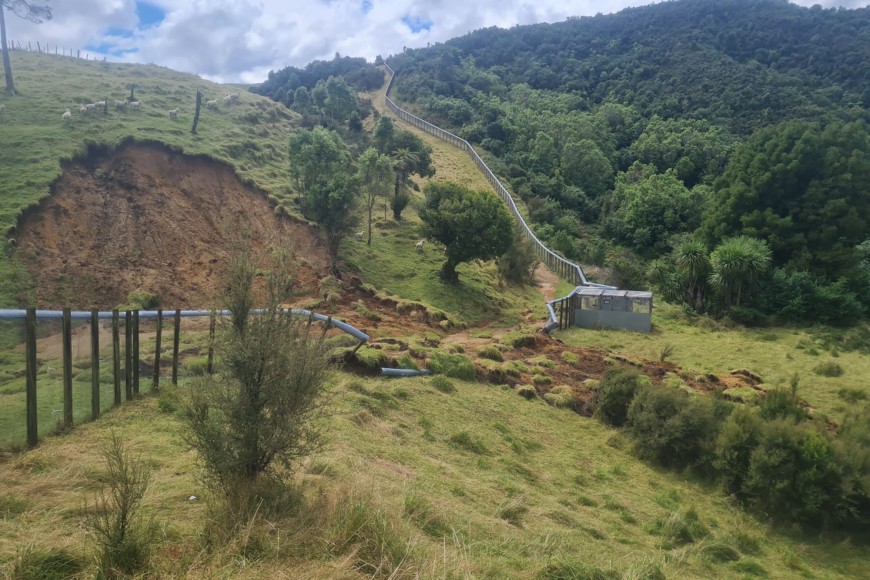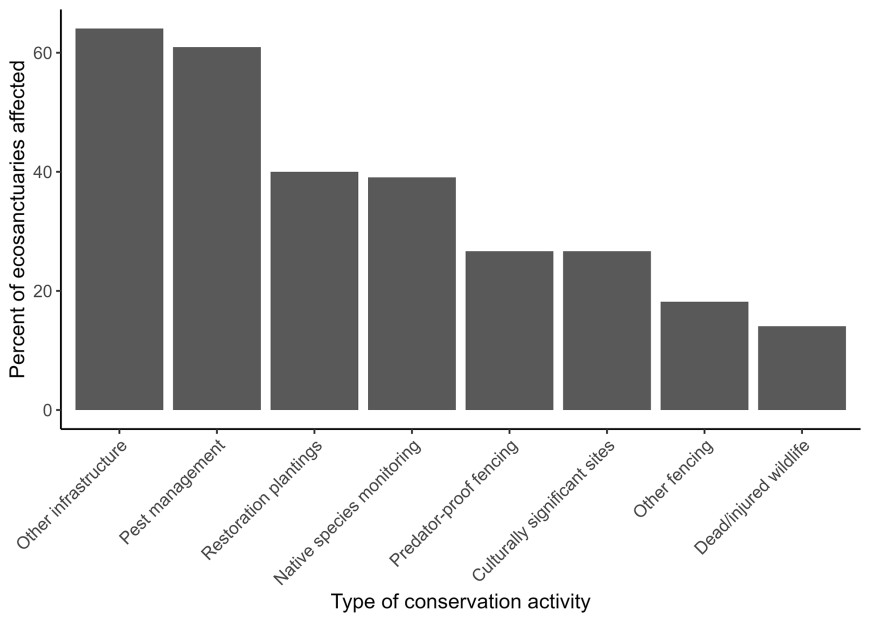One of the aims of a subsequent project Integrated ecological impact assessment to inform cyclone response and recovery, led by Manaaki Whenua – Landcare Research, was to assess how conservation infrastructure was affected, using ecosanctuaries as an example. Ecosanctuaries are community-led ecosystem restoration projects that play a vital role within Aotearoa’s conservation infrastructure. They provide a refuge for local biodiversity, including some of our most threatened species, and a link between local communities and indigenous biodiversity and conservation. The cyclone impacts experienced by these large-scale projects therefore represent a snapshot of impacts on conservation infrastructure and efforts throughout the areas affected by the cyclone.

Damage to Pan Pac Kiwi Crèche, Opouahi, Hawke's Bay
As part of the project, Dr Warwick Allen, a Plant Community Ecologist at Manaaki Whenua – Landcare Research, interviewed representatives of 64 ecosanctuaries throughout the North Island and asked them to describe how their project was affected by Cyclone Gabrielle, including the different types of cyclone damage and impacts on conservation activities. He found that damage from wind (75% of ecosanctuaries) and erosion (70%) was widespread, followed by flooding (39%) and sediment deposition (27%). Although staff at 14 ecosanctuaries (22%) reported no impacts on conservation activities, most described multiple impacts. Damage to infrastructure (e.g., predator-proof fences, buildings, roads, walking tracks) was widely reported and often paired with disruption to conservation activities such as pest control, restoration plantings, and native species monitoring (see figure below).

Range of impacts of Cyclone Gabrielle on conservation activities at North Island ecosanctuaries. The damage ranged from minor and inexpensive to critically important and costly.
The interviewees stated that some of the cyclone damage is likely to lead to longer-term problems, including incursions through damaged predator-proof fences, loss of access to pest management areas, reduced capacity of the paid and volunteer conservation workforce, and opportunity costs associated with recovery to a previous state, delaying advancement towards future conservation goals. When considering the overarching goal of ecosanctuaries to protect some of Aotearoa’s threatened species, it was encouraging that the broader network of ecosanctuaries was resilient to cyclone impacts, with no reported local extinctions and a resolve to rebuild what was lost and keep pushing forward with conservation projects. However, with the frequency of extreme weather events expected to increase, this resilience will continue to be tested and adequate resourcing will be needed to ensure the ongoing protection of threatened species.
In August 2023, Warwick presented a summary of this research at the Sanctuaries of New Zealand Annual Workshop. The workshop was attended by 100 delegates, including researchers, Regional Council representatives, and practitioners from ecosanctuaries throughout Aotearoa. This presentation helped start a conversation about how to work together to better prepare for and respond to future extreme weather events, and the project team will continue to share further research findings and management recommendations with the network of ecosanctuaries.

